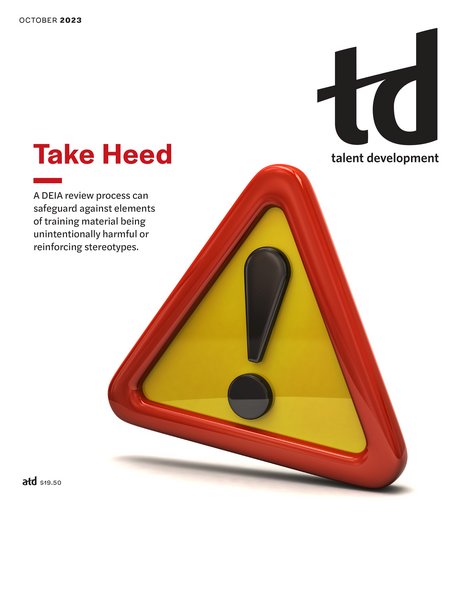TD Magazine Article
Learner Participation Required
Active responding creates efficient and effective training.
Mon Oct 02 2023
Active responding creates efficient and effective training.
Explicit instruction, a teaching framework primarily used in elementary education, includes 16 elements (as described by education consultants Anita Archer and Charles Hughes); those components include breaking down complex skills into smaller instructional units, beginning lessons with a clear statement of the goals and your expectations, providing an adequate range of examples and nonexamples, and requiring frequent responses.
Frequent, active responses involve learners partnering with others to share their thoughts, clicking or pressing on a computer screen to select an answer, selecting from a premade response card, or choral or individual responses. In "Improve Training With Active Engagement," the October edition of TD at Work, Adam Hockman takes a deep dive into the choral responding method.
Using the method, facilitators provide a focus cue, allow learners thinking time, give them verbal cues, then allow for a brief pause before prompting learners to respond. Hockman writes that choral responding is beneficial when first introducing new concepts because it gives learners an opportunity to participate, practice, and receive feedback as well as room to make errors.
Facilitators beginning with explicit instruction can ask a colleague to observe their training course to ensure they follow the methods, such as remembering to review session objectives before beginning instruction. Choral responding, for instance, may feel unnatural for trainers, so it's helpful to get feedback as they practice and become more familiar with the method.
These tips were adapted from the October 2023 issue of TD at Work. Learn more at td.org/TDatWork.

